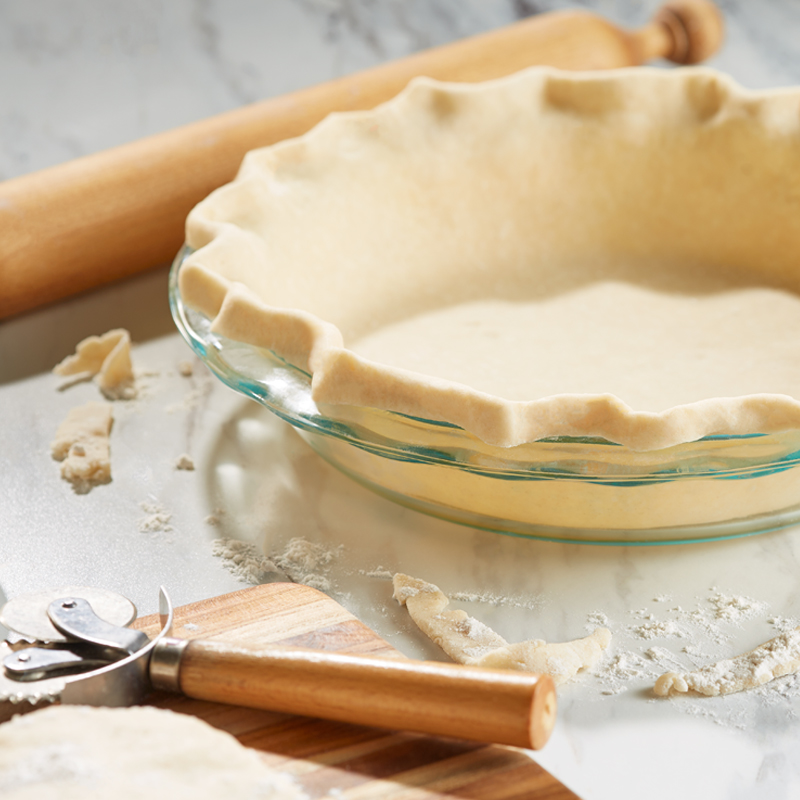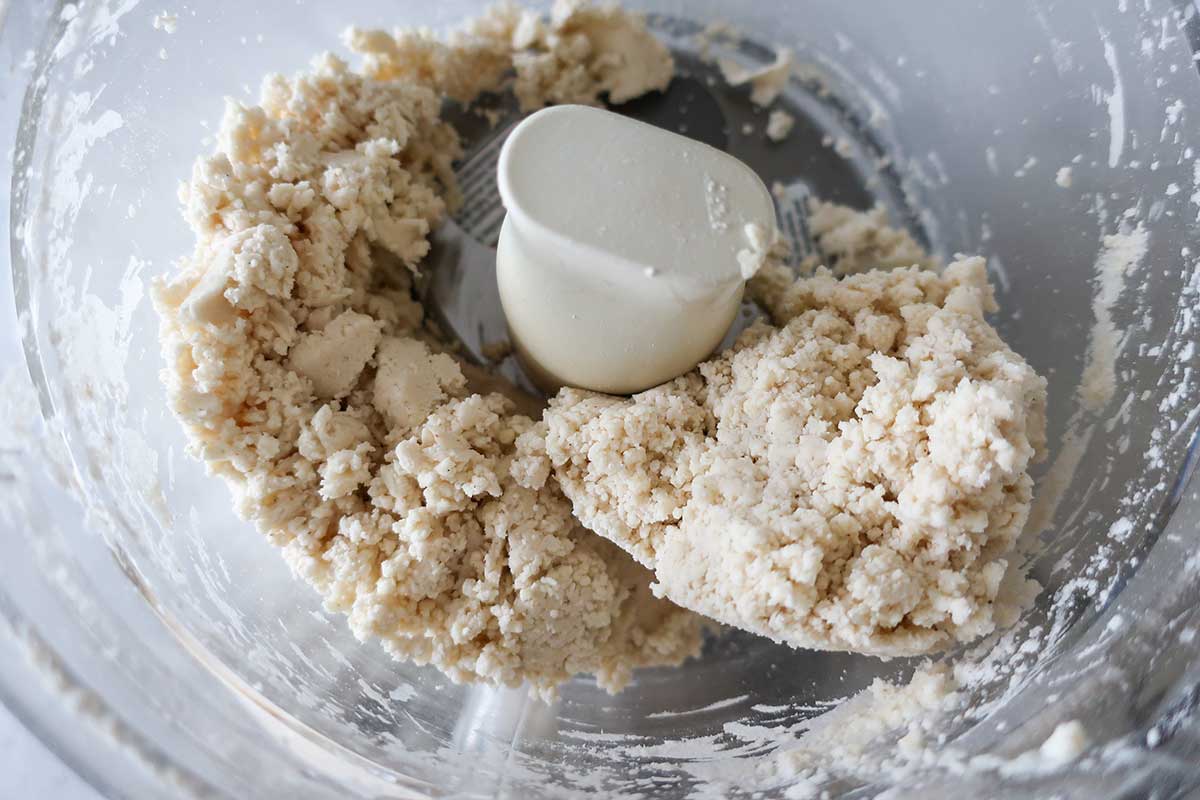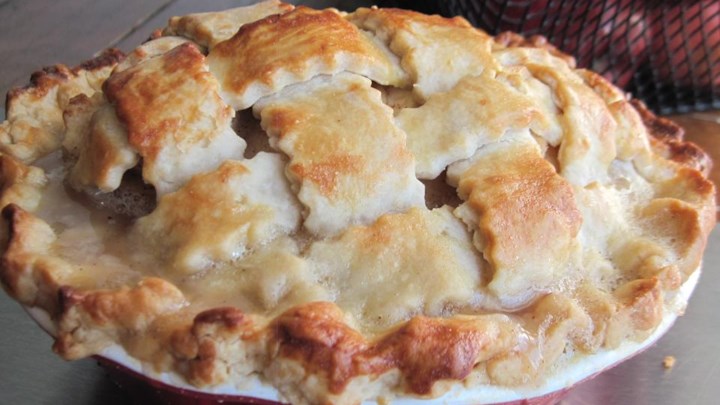Within the realm of culinary artistry, meals processor pie crusts reign supreme as a testomony to precision and easy indulgence. With the symphony of a whirring blade, the standard components of flour, butter, and water rework right into a flaky, golden masterpiece that elevates any pie to a unprecedented culinary expertise.
Harnessing the ability of a meals processor, residence bakers can now craft beautiful pie crusts with unparalleled ease, opening up a world of culinary prospects. From basic fruit pies to savory quiches, the flexibility of meals processor pie crusts is aware of no bounds.
Overview of Meals Processor Pie Crusts
Meals processor pie crusts are doughs ready utilizing a meals processor, a kitchen equipment that mixes and processes components rapidly and effectively. These crusts are sometimes made with flour, butter, salt, and typically sugar, and are characterised by their flaky, tender texture and talent to carry fillings properly.
Utilizing a meals processor to make pie crusts presents a number of benefits over conventional strategies. Firstly, it’s a a lot sooner and fewer labor-intensive course of, because the meals processor does a lot of the work of slicing the butter into the flour.
Secondly, meals processor pie crusts are usually extra constant in texture and thickness, because the meals processor ensures that the components are evenly distributed.
Nonetheless, there are additionally some disadvantages to utilizing a meals processor to make pie crusts. One drawback is that it may be troublesome to manage the quantity of gluten improvement within the dough, which may have an effect on the feel of the crust.
Moreover, meals processor pie crusts might be tougher to roll out than conventional pie crusts, because the dough might be extra sticky and fewer pliable.
Kinds of Meals Processor Pie Crusts
There are a number of various kinds of pie crusts that may be made in a meals processor. Among the commonest sorts embrace:
- Flaky pie crust:That is the most typical kind of pie crust, and it’s characterised by its mild and flaky texture. Flaky pie crusts are made with a mixture of all-purpose flour and butter, and they’re sometimes rolled out earlier than being baked.
- Graham cracker crust:This sort of pie crust is made with graham cracker crumbs, butter, and sugar. It’s a in style alternative for pies which can be served chilled, corresponding to cheesecake and key lime pie.
- Chocolate cookie crust:This sort of pie crust is made with chocolate cookie crumbs, butter, and sugar. It’s a wealthy and decadent alternative for pies which can be served heat, corresponding to chocolate cream pie and apple pie.
- Pretzel crust:This sort of pie crust is made with pretzel crumbs, butter, and sugar. It’s a salty and crunchy alternative for pies which can be served with candy fillings, corresponding to fruit pies and cream pies.
Strategies for Making Meals Processor Pie Crusts

Mastering the artwork of making a flaky and tender pie crust utilizing a meals processor requires a mixture of precision and approach. This part will delve into the important steps concerned, from measuring and getting ready components to pulsing the combination and forming the dough, making certain an ideal base to your culinary creations.
The inspiration of a profitable pie crust lies in understanding the roles of its key components. Flour gives the construction, whereas butter contributes to flakiness. The addition of water prompts the gluten within the flour, making a cohesive dough. The hot button is to realize the suitable stability amongst these components, making certain a young but sturdy crust.
Measuring and Getting ready Elements, Meals processor pie crust
Exact measurement is essential for a well-balanced crust. Use a kitchen scale to precisely weigh the flour, butter, and water. Chilly butter, minimize into small cubes, is important for creating flaky layers. Preserve the water ice-cold to stop untimely gluten formation.
Pulsing the Combination
Mix the dry components within the meals processor and pulse till mixed. Add the butter cubes and pulse till the combination resembles coarse crumbs. Keep away from over-processing, as this could develop the gluten, leading to a troublesome crust.
Forming the Dough
Steadily add the ice water, pulsing simply till the dough comes collectively. Keep away from including an excessive amount of water, as this could make the dough sticky and troublesome to deal with. As soon as the dough varieties a ball, take away it from the meals processor and wrap it in plastic wrap.
Refrigerate for no less than half-hour earlier than rolling out.
Troubleshooting Widespread Points: Meals Processor Pie Crust

Making meals processor pie crusts requires precision and approach, however troubleshooting frequent points can guarantee a profitable outcome. Listed below are some frequent issues and their options:
Dough is just too dry
- Add chilly water 1 tablespoon at a time and pulse till the dough simply comes collectively.
- Don’t overmix, as this can develop gluten and make the crust robust.
Dough is just too moist
- Add extra flour 1 tablespoon at a time and pulse till the dough is now not sticky.
- Don’t overwork the dough, as this can make it robust.
Dough is crumbly
- Use chilly butter and ice water to stop the butter from melting and making a crumbly texture.
- Attempt utilizing a unique kind of flour, corresponding to pastry flour or bread flour.
- Deal with the dough gently and keep away from overworking it.
Correct dealing with and storage
- Wrap the dough tightly in plastic wrap and refrigerate for no less than half-hour earlier than rolling out.
- This enables the gluten to calm down and prevents the crust from turning into robust.
- If the dough is just too chilly, it is going to be troublesome to roll out.
- If the dough is just too heat, it is going to be sticky and troublesome to deal with.
Inventive Variations and Flavorings

The basic meals processor pie crust recipe presents a flexible base for culinary creativity. By incorporating herbs, spices, and different flavorings, you’ll be able to rework the style and look of your pie crusts, making them excellent for a variety of dishes.
For a savory pie crust, strive including herbs like thyme, rosemary, or oregano. Spices corresponding to garlic powder, onion powder, or paprika may improve the flavour. For a sweeter pie crust, take into account including cinnamon, nutmeg, or ginger. It’s also possible to incorporate citrus zest, corresponding to lemon or orange, for a refreshing twist.
Candy Fillings and Toppings
Meals processor pie crusts pair properly with quite a lot of candy fillings and toppings. Basic choices embrace fruit pies, corresponding to apple, cherry, or blueberry. It’s also possible to strive cream pies, corresponding to chocolate, vanilla, or lemon. For a singular twist, think about using savory fillings, corresponding to roasted greens or meat.
Savory Fillings and Toppings
Savory meals processor pie crusts are excellent for quiches, tarts, and hand pies. Quiches might be stuffed with eggs, cheese, and greens, whereas tarts might be stuffed with quite a lot of components, corresponding to fruits, greens, or meats. Hand pies are an important possibility for on-the-go snacks and might be stuffed with something from savory to candy components.
FAQ Abstract
What’s the key to attaining a flaky pie crust?
The key lies in holding the butter chilly and dealing the dough as little as attainable. Use chilled components and pulse the combination till the butter is evenly distributed in small, pea-sized items.
How can I forestall my pie crust from turning into soggy?
Be sure that the dough is well-chilled earlier than rolling it out. This may assist forestall the gluten from growing an excessive amount of, leading to a harder crust. Moreover, pre-bake the crust earlier than including the filling to create a barrier towards moisture.
What’s the finest flour to make use of for meals processor pie crusts?
All-purpose flour is a dependable alternative, however for a flakier crust, think about using a mixture of all-purpose flour and pastry flour. Pastry flour has a decrease protein content material, which ends up in a extra tender crust.




